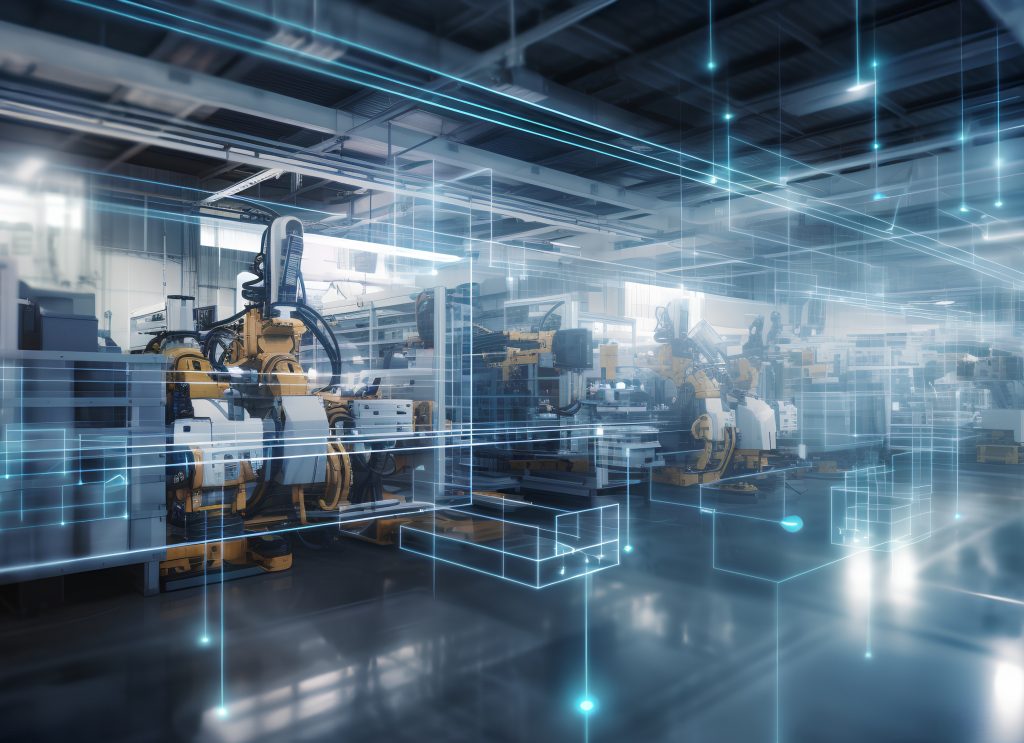Production: Increasing efficiency through AI
Artificial intelligence can help to significantly increase the efficiency of production lines. We show you five possible applications.
The use of cyber-physical systems in the manufacturing sector offers great benefits, especially for increasing the efficiency of production lines. Artificial intelligence (AI) can control systems to minimize downtime, optimize equipment utilization, and predict failures. Today, let’s look at 5 ways AI can optimize production line efficiency.
1. Quality control through computer vision
Computer vision is a field of artificial intelligence and computer science that deals with the automated processing, analysis, and interpretation of visual information. In manufacturing, computer vision can enable effective quality control, especially in additive manufacturing.
The use of high-resolution cameras in 3D printers can detect subtle defects such as cracks, inconsistent machine movements and other patterns that are invisible to the human eye. The cameras record the printing process layer by layer, providing data on alignment, dimensions and other measurements to ensure the finished product meets expected standards. By using artificial intelligence, the system can learn from the video footage and eventually detect defects in the product or manufacturing process on its own. This improves the efficiency of quality control and reduces human error sources.
2. Generative design
Generative design is a design approach based on algorithmic generation of shapes, structures and patterns. Detailed design information is fed into AI algorithms that take into account various design parameters such as production methods, product material, time and budget constraints. The AI then examines each possible permutation of a solution and provides a set of suitable design suggestions.
Product designers can set thresholds to ensure that the generated values fall within defined intervals. The results serve as proposed solutions that can be further tested by machine learning to gain insight into which design meets expectations. This iterative process can be repeated until the most promising design solution is found. AI can thus help make the product design and development phase in manufacturing companies more efficient.
3. Smart IoT ecosystem
Manufacturers face the challenge of managing a multitude of devices that send data to the cloud. This data is often not linked, making analysis difficult. Developing an integrated application that pulls data from all IoT-connected devices can provide a holistic view of production operations.
Integrating artificial intelligence into the IoT ecosystem can also help automate the assembly line. For example, if a device is operating inefficiently, production management will be notified. In the event of a device failure, the system can automatically create a contingency plan and reorganize activities. The combination of IoT and artificial intelligence thus offers potential for increasing efficiency and optimizing production processes.
4. Predictive maintenance
The manufacturing industry has used various maintenance strategies over the years. First, reactive maintenance was performed, where machine components were repaired only after a failure. Then it switched to predictive maintenance, where maintenance was performed on a planned schedule, based on previous failures.
With the help of artificial intelligence, it is now possible to perform predictive (also: predictive) maintenance. This involves feeding machine usage data into machine learning models to predict the timing of potential failures. This allows problems to be corrected before they occur and ensures a virtually uninterrupted production process. Predictive maintenance maximizes the service life and utilization of equipment and saves costs because components are only serviced when they are about to fail.
5. Digital twins
Digital twins are virtual images or models of real physical objects, systems or processes. They are based on large data sets and are created using digital technologies such as sensors, cameras, IoT (Internet of Things) devices, and other collection methods. These technologies enable the continuous collection of real-time data from the real world.
Manufacturing companies use this technology to create virtual models of factory equipment, products or machine components. These models are based on real-time information from the real world captured by cameras, sensors and other data collection techniques.
Using digital twins enables more effective factory asset monitoring, proactive problem solving and data analysis. Companies can test scenarios to improve asset performance and predict failures. The digital twin enables the performance of products to be visualized in the factory environment and used by workers in real time. The knowledge gained from the virtual environment can be transferred to the physical world to optimize product design and develop future products.
Source: eInfochips, Inc.


